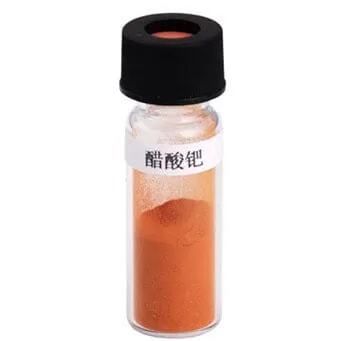What is palladium II acetate used for?
"What is palladium II acetate used for? Palladium II acetate, a chemical compound with the formula Pd(O2CCH3)2, serves as a versatile catalyst in various organic synthesis reactions. Its ability to facilitate carbon-carbon and carbon-heteroatom bond formations has led to its widespread use in the pharmaceutical, agrochemical, and fine chemical industries."
Origins and Development
Palladium II acetate's utility as a catalyst stems from research conducted in the mid-20th century, which explored the catalytic properties of transition metal compounds in organic transformations. Initial studies focused on palladium's ability to promote coupling reactions between organic substrates, laying the groundwork for the development of palladium-based catalysts. Over time, advancements in synthetic methodologies and ligand design further optimized the performance and selectivity of palladium II acetate in various catalytic processes.
Catalytic Mechanism
The catalytic activity of palladium II acetate arises from its ability to undergo reversible oxidative addition and reductive elimination reactions with organic substrates. In cross-coupling reactions, such as the Suzuki-Miyaura and Heck reactions, palladium II acetate coordinates with organoboron or organohalide reagents to form reactive intermediates that undergo carbon-carbon bond formation. Additionally, palladium II acetate catalyzes carbonylation, amination, and cyclization reactions through similar mechanistic pathways, enabling the synthesis of complex organic molecules with high efficiency and selectivity.
Applications in Organic Synthesis
An Inventory of Eight Non-Destructive Testing Methods for Composite Materials
Is Ethyl Acetate Environmentally Friendly?
Discover the Benefits of Rdp Polymer Powders for Stronger, More Durable Coatings
Palladium II acetate finds extensive use in the synthesis of pharmaceuticals, agrochemicals, and fine chemicals due to its versatility and efficiency as a catalyst. In pharmaceutical chemistry, palladium-catalyzed coupling reactions enable the construction of key structural motifs found in bioactive compounds, facilitating the development of novel drug candidates. Similarly, in agrochemical research, palladium II acetate-mediated transformations play a crucial role in the synthesis of crop protection agents and herbicides. Furthermore, the ability of palladium II acetate to catalyze selective functionalization of complex molecules has enabled the rapid diversification of chemical libraries for drug discovery and materials science applications.
Advantages and Impact
The use of palladium II acetate as a catalyst offers several advantages over traditional synthetic methods, including milder reaction conditions, shorter reaction times, and improved atom economy. By facilitating efficient bond formations under mild conditions, palladium II acetate enables the synthesis of complex molecules with fewer synthetic steps and reduced waste generation. Moreover, the development of ligand-controlled palladium catalysis has expanded the scope and selectivity of palladium-catalyzed transformations, opening new avenues for synthetic chemists to access challenging molecular architectures.
Future Perspectives
As research in catalysis and synthetic methodology continues to advance, the role of palladium II acetate in organic synthesis is expected to evolve further. Ongoing efforts to develop more sustainable and efficient catalytic systems, such as ligand-free and solvent-free protocols, aim to enhance the practicality and environmental sustainability of palladium-catalyzed transformations. Additionally, the integration of palladium II acetate with emerging technologies, such as flow chemistry and computational modeling, holds promise for streamlining reaction optimization and accelerating the discovery of new chemical transformations.
Conclusion
In conclusion, palladium II acetate stands as a versatile and indispensable catalyst in modern organic synthesis, enabling the efficient construction of complex molecules with diverse applications in pharmaceuticals, agrochemicals, and materials science. From its origins in fundamental research to its widespread adoption in industrial processes, palladium II acetate exemplifies the transformative impact of catalysis on chemical synthesis and innovation. As the field of catalysis continues to evolve, palladium II acetate will remain a cornerstone of synthetic chemistry, driving advances in drug discovery, materials development, and chemical



